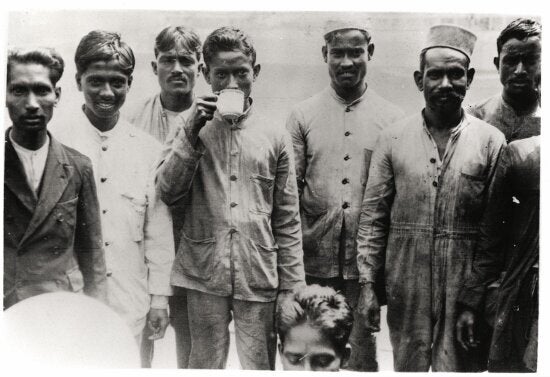After an Eid party in Cambridge last week, I crossed the main road with my children. A woman drove by and shouted, 'Go back where you came from! Go home!'
Of course I was going home! I was walking to my car to drive to the house I've lived in for 10 years. I have lived in Cambridge all my life. I am home!
My children's confusion and my own distress at this thoughtless attack inspired me to speak out to dispel this myth: people who embrace a non-western culture don't belong.
October marks Black History Month which embraces the history of African, Caribbean and Asian people who have a direct link with the UK through slavery, colonialism or migration. Lascars, or South Asian sailors, must be included in this significant group of survivors.
For over 350 years, lascars played a crucial role in Britain's history, ensuring goods from India reached British ports safely. Stories of hardship, cruelty and heroism have been passed down through generations and, as a direct descendant of a lascar, I have heard many.
The employment of lascars on British merchant ships began in the 17th Century during the early days of the British East India Company. Englishmen initially worked aboard these ships, but the rate of sickness and death was so high during these 3-4 month voyages that many abandoned their posts once they arrived in India. This left ships short of crew for the return voyage to England. Lascars were employed to replace them and led to believe they would enjoy comfort, high wages and rich experiences in foreign lands. They were also promised their passage home.
In reality, conditions were appalling. As lascars came from warm climates, it was believed they could stand intense heat so many stoked engines in rooms where temperatures could exceed 40 degrees. Others worked in the steamy bowels of the ship as cleaners, cooks, coal carriers and machinery oilers. It was their duty, once arriving in port, to unload the ship.
Health problems were also rampant. Lascars were fed rotten food, yet denied proper medical assistance when they fell ill. Others died of heat stroke, exhaustion, malnutrition and disease and some were brutally punished. This maltreatment prompted many lascars to jump ship in British ports. Others were abandoned without wages and left to fend for themselves.
Although many of these sailors lived in poverty and degradation in Britain, they opted for taking a chance on finding work in shipyards and railroads over the dangerous journey home. Many of these men failed to find employment and were sent to local workhouses. Those who were paid received less than their white counterparts.
Most lascars, uneducated and unwanted, eked out existences as musicians, street sweepers, peddlers, basket makers and even beggars in London's dockland areas of Shadwell, Wapping and Poplar. A few set up cafes, restaurants and hotels. Locals saw these new residents as dirty which, given their living conditions, was hardly their fault. Poverty and prejudice went hand-in-hand, offering these misplaced people few opportunities to become respected members of society.
As well as living in gruelling conditions, lascars were ill equipped for the cold weather in England. They wore thin, pyjama-like garments and heelless shoes. Some lived in hostels in abysmal conditions, with no bedding, furniture or fireplaces and many were victimised by lodging housekeepers. Unable to find shelter from the British winters, many perished on the streets.
However, by the mid-nineteenth century some British citizens empathised with the lascars and missionaries were able to provide minimal shelter. Most of these sailors settled down and took English wives - a disgrace to society in many eyes.
By the eve of the First World War, there were over 50,000 lascars in Britain and many had no choice but to become involved in the war effort. Their loyalty was surprising, considering that lascars were fighting for a nation that didn't embrace them.

Photo by Museum of London
Since then, small settlements of lascars have grown in London and other port cities, contributing a great deal to the British economy and helping to make England the remarkable country it is today.
Sadly, racism is still very much alive in multi-cultural Britain. The passing motorist's comment proves this. Perhaps a reminder of the vast contribution made by the ancestors of the Asian British will dispel some of this ignorance.
Like every other British citizen in England, I am home.